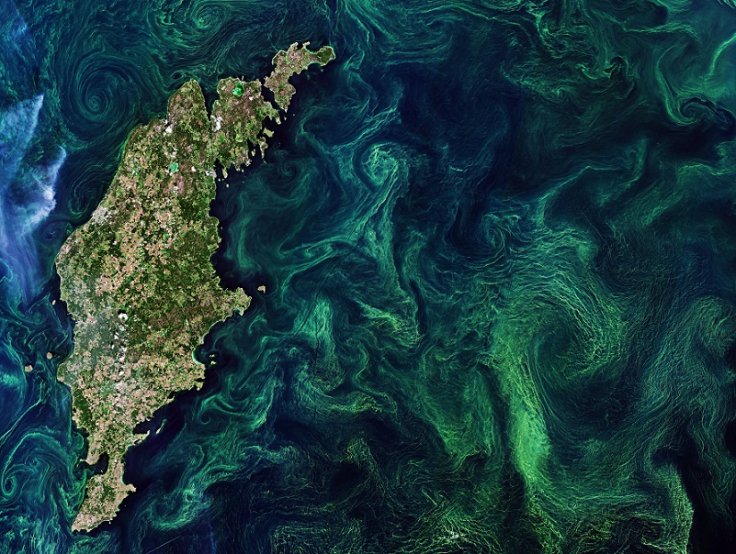The European Space Agency (ESA) shared a photo taken from space featuring a high concentration of algal blooms in the Baltic Sea. As per the agency, massive concentrations of algae can sometimes be very dangerous and cause mass animal die-offs.
The photo was taken by the agency's Sentinel-2 satellite as part of the Copernicus Program, a mission that monitors environmental changes on Earth. It features the algal blooms around Gotland, an island near Sweden.
Highest Concentration Of Algal Blooms

As explained by the ESA, the highest concentrations of algal blooms often appear in the Central Baltic. These usually occur when water temperatures are extremely high. During these conditions, tiny microscopic marine plants known as phytoplankton multiply rapidly. As they propagate, the chlorophyll used by the phytoplankton to harness energy from the Sun, known as photosynthesis, can cover vast areas of the ocean.
In the photo shared by the ESA, dark greenish streaks of algae can be seen swirling around the island. The agency noted that although these algal blooms can occur naturally during hot seasons, waste produced by human activities also help algae to thrive.
"Human activity is also said to increase the number of annual blooms," the agency explained. "Agricultural and industrial run-off pours fertilizers into the sea, providing additional nutrients algae need to form large blooms."
Dangers Of Algal Blooms
Algal blooms are part of the natural order and can provide nutrients for larger marine animals. However, in certain cases, these can also be very harmful to oceans. According to the ESA, high concentrations of algal blooms that can produce natural toxins are harmful to aquatic animals. These toxins can also be dangerous for humans who rely on the affected region for their natural resources.
Aside from this, decaying phytoplankton can attract bacteria, which can absorb the oxygen from the water. This can create dead zones in the oceans, which could lead to mass die-offs of marine animals.
"The bacteria that consume the decaying plants suck the oxygen out of the water, creating dead zones where fish cannot survive," the ESA stated. "Large summer blooms can contain toxic algae that are dangerous for both humans and other animals."









